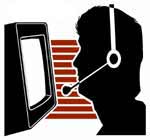In the last column, Rick gave some basics about The Math of Energy Management including debunking some of the hype about so-called "energy vampires."<.p> In this column, he discusses CFL - Compact Fluorescent Lamps. Is It Worth the Investment?
A compact fluorescent lamp (CFL) saves 75 percent of the energy of an incandescent lamp and lasts four to five times longer. For simplicity's sake, let's avoid life-cycle costing or net present value (NPV) and stick with simple payback period and ROI. We can look at the cost of a CFL ($2) or the "price premium" over the old-fashioned incandescent lamp (50 cents). Our premium cost of $1.50 needs to yield a reasonable ROI. Let's again assume 8,760 hours to keep the energy model simple. We'll assume a 60 watt incandescent is being replaced with a 15 watt CFL (4:1 ratio) that produces the same amount of light.
- (8,760 hours x 45 watts saved) / 1,000 = 394 kWh saved per year
- 394 kWh x 10 cents / kWh = $39.40 savings per year
- Cost Premium $1.50 / $39.40 savings per year = 0.04 year simple payback period, or about 2 weeks
- 1 / 0.04 year payback period = 2,500 percent ROI
A 19 size, standard LED lamp has been offered for $99 (although the price is dropping every month). LED saves 90 percent compared to incandescent and lasts 25,000 to 50,000 hours. - (8,760 hours x 54 watts saved) / 1,000 = 473 kWh saved per year
- 473 kWh x 10 cents / kWh = $47.30 savings per year
- Cost premium $98.50 / $47.30 savings per year = 2.08 years
- 1 / 2.08 payback period = 48 percent ROI
Not bad, but not nearly as good as the CFL. This ROI will certainly improve when the cost of LED lamps drops below $5 – the reliability improves and the harsh lighting issue has been resolved. And, how about a solar photovoltaic panel? A national warehouse discount chain is offering a new solar photovoltaic panel for “only $300” that produces a maximum of 60 watts. Since the sun isn’t up 24 hours per day and the maximum output isn’t reached on the average day, the value of the 60 watts needs to be adjusted. In addition, the amount of sunlight varies by region. Let’s assume 4 hours per day at 40 watts. For comparison, wind generation produces about 35 percent of its rated kW.
- 4 hours x 365 days / year = 1,460 hours
- 1,460 hours / year x 40 watts produced = 58,000 watts
- 58,000 watts / 1,000 = 58 kWh
- 58 kWh x 10 cents / kWh = $5.80 / year
- $300 investment / $5.80 per year in savings = 51.7 year simple payback period
- 1 / 51.7 years = 2 percent ROI without any tax credits or grants to subsidize its cost
The Good News Well-designed commercial and industrial energy-management projects often produce simple payback periods of 1 to 5 years. Some energy-conservation measures (ECMs) have poor payback periods and are sometimes blended with the faster ROI ECMs for an acceptable ROI to the owner.
| Energy Conservation Measures (ECMs) |
Payback Period (Years) |
| Energy-Management System (new) |
1 to 4 | | High-Efficiency Motors & VFDs | 1 to 3 | | Lighting Fixtures & Ballasts (retrofit) |
1 to 5 | | Steam Trap (replacement/repairs) | 1 to 5 | | Energy-Management System (replacement) | 1 to 6 | | Manufacturing Process (heat recovery) | 2 to 5 | | Boiler (replacement) |
7 to 12 |
| Chiller (replacement) | 8 to 12 | | Rooftop Unit HVAC (replacement) | 9 to 15 |
| Building Insulation | 10 to 15 | | Roof Insulation | 20 to 30 |
| Windows (replacement) | 20 to 50 | Now do you still think a replacement furnace or replacement windows will pay for themselves in “just a few years,” as the salesman suggested? Energy Management Begins and Ends with Finance
Seek independent advice from a Certified Energy Manager (CEM) or registered Professional Engineer (PE) before seriously considering your investments in energy management. Demand-side energy management is one of the best business and personal investments available – if it’s done wisely. Demand-side management can be even more attractive if your local utility (or state energy office) offers demand-side management (DSM) rebates to support your energy-management investments. Demand-side management is also the most cost-effective source of new energy supply. More supply generally results in lower energy prices, too. Demand-side management is – and has been – green and sustainable. Focus on the ROI and you’ll become greener.
Richard G. Lubinski is president of Think Energy Management LLC, an internationally recognized energy consulting firm. He is also a Life Member of the Association of Energy Engineers (AEE) and serves as the president of the Northern Ohio Chapter of AEE. Lubinski holds several national professional certifications including Certified Energy Manager, Certified Energy Auditor, Certified Demand Side Management Professional, Certified Sustainable Development Professional, Certified Energy Management Systems Contractor, Certified Business Energy Professional and Certified U.S. Green Lights Survey Ally. He was named Energy Engineer of the Year 2009 (AEE Region III), Energy Manager of the Year 2006 (AEE Region III) and Energy Engineer of the Year 2008 AEE Northern Chapter.
Top of Page
Back to Great Lakes Geek Columnists
| 

